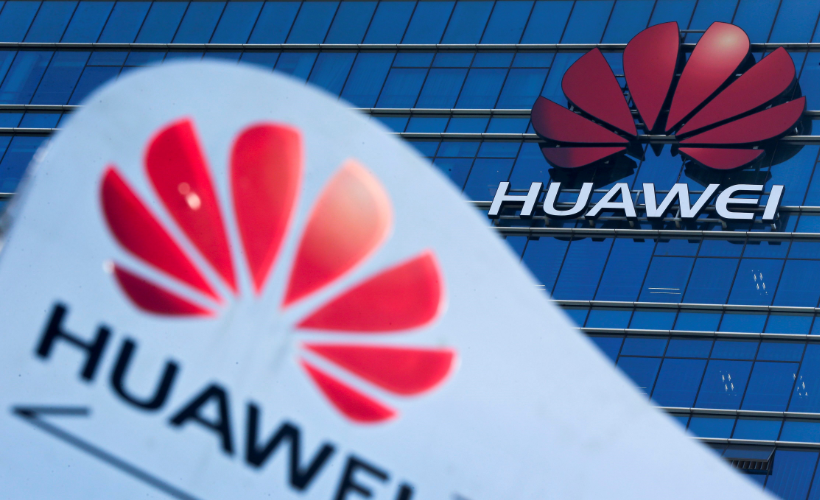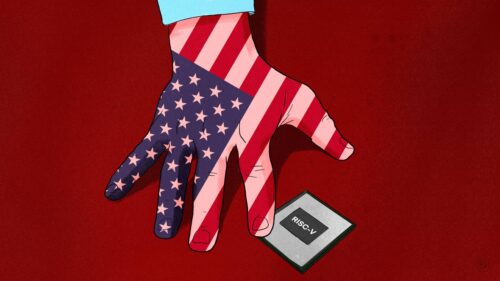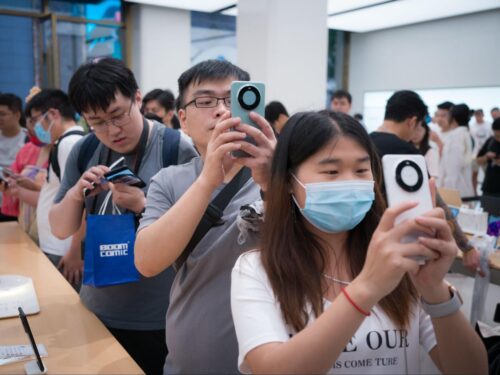The ripple effects of a complete ban on Huawei access to U.S. tech will be huge

Events in the U.S. campaign against Chinese telecommunications equipment leader Huawei developed rapidly over the past week, with twin U.S. government actions aimed at the firm. The Executive Order signed by President Trump last Wednesday declared a national emergency and authorized the U.S. Commerce Department to use new authorities to block the inclusion of virtually any component, equipment, or service from companies controlled by “adversary governments,” a clear reference to China. But implementation of this order will take months, and the full scope is still unclear.
With so much media attention focused on the executive order, the arguably much more important Commerce announcement also on Wednesday that it would add Huawei and 68 global affiliates to the Entity List got less media attention initially. However, it is clearly much more important for the future of Huawei, and will impact the course of ongoing trade discussions, while generating huge implications for the global mobile telecommunications supply chain.
Huawei is highly dependent on U.S. suppliers for semiconductors and software. While the firm has reportedly stockpiled up to a year of a range of semiconductors critical to its supply chain, the firm can’t stockpile software updates, and the impact of a full cutoff would be felt here first. When the Commerce Department went to a full denial order on ZTE last year, the firm’s ability to maintain its installed base of equipment was threatened almost immediately — it could not upgrade the Oracle database software in its mobile base stations.
Over the weekend all U.S. companies ceased shipments to Huawei pending clarification from the U.S. Commerce Department over the issuance of a so-called temporary general license (TGL) exemption — Commerce invented the TGL under the Obama administration as a vehicle for preventing ZTE from a complete ban under similar legal charges that Huawei is facing. Commerce issued a 90-day TGL Monday, which can be rolled over, but this is only a temporary measure, designed to allow suppliers to determine their compliance situation, and carriers to consider whether to change vendors given the threat to Huawei’s future viability as a company.
The Commerce Department issued a 90-day temporary general license (TGL) exemption Monday, which can be rolled over, but this is only a temporary measure, designed to allow suppliers to determine their compliance situation, and carriers to consider whether to change vendors given the threat to Huawei’s future viability as a company.
Indeed, the Entity List action appears to be intended to force carriers to make this decision. France, Germany, and the Netherlands have said they will not ban Huawei, but the decision on what to do appears to be out of government hands, given the threat to network operation posed by a full cutoff for Huawei.
For Huawei, the stakes are exponentially higher than in the ZTE case. The firm supplies carriers in over a hundred countries around the world. The firm is also poised to lead China’s rollout of next generation 5G networks on a large scale. The U.S. action thus appears designed to both force carriers to rip and replace Huawei equipment, and cripple China’s bid to be the first to get to real 5G at scale over the next two years.
By including Huawei’s chip design affiliate HiSilicon in the Entity List action, the U.S. is paying a heavy price now for what may turn out in the long term to be a Pyrrhic victory. The U.S. can inflict serious damage to Huawei’s smartphone and telecommunications infrastructure equipment in the short term by denying Huawei hard-to-replace components in both product areas. For smartphones, radio frequency (RF) chipsets are dominated by American firms, such as Qorvo, Qualcomm, and Skyworks, but somewhat plausible alternatives do exist, such as Taiwan’s Mediatek and even at least one stealth mode start-up in Shanghai. The other chips provided by American firms for smartphones are more readily replaced with chips from non-American firms. For telecommunication infrastructure equipment, American firms, such as Xilinx, ADI and TI, dominate sales of antenna to Huawei as do American firms, such as Finisar/II-VI, Lumentum, and NeoPhotonics, in lasers and photonic modules. It may be quite difficult to replace these components in the near future.
However, inflicting near-term pain on Huawei comes at a price. Some of these firms are quite reliant on Huawei ranging from approximately five percent of total revenue for large firms, such as Qualcomm and Broadcom, to almost half of total revenue for specialized NeoPhotonics. Worse still, it will accelerate the push to de-Americanize China’s silicon supply chain.
Focusing on the actual chips may be a mere sideshow. The tools needed to design chips, called electronic design automation (EDA) tools, are dominated by a small oligopoly of three firms: Cadence, Synopsys, and Siemens’ Mentor Graphics. Without these tools, it is basically impossible to design chips. Furthermore, given that these EDA tools draw upon repositories of decades of chemistry and material science knowledge, it is virtually impossible for new EDA entrants or existing small tool vendors to provide the quality of tools necessary for complex chip design. Cadence and Synopsys have already announced their plans to stop servicing Huawei and its affiliates. The U.S. government, in line with its laws on export controls, will likely argue that Mentor Graphics uses significant U.S. technology in its products so that it, too, falls under U.S. jurisdiction. Cutting off Huawei, its affiliates, and, potentially, others that attempt to supply Huawei with chips from access to these EDA tools would sound a death knell for the company.
The tools needed to design chips, called electronic design automation (EDA) tools, are dominated by a small oligopoly of three firms: Cadence, Synopsys, and Siemens’ Mentor Graphics. Without these tools, it is basically impossible to design chips. Cutting off Huawei from access to these EDA tools would sound a death knell for the company.
We could be moving towards a worst-case scenario for Huawei. The ripple effects are enormous and include:
- Completely undermining China’s rollout of next generation 5G networks just as they are accelerating the process. Huawei accounts for 55-60 percent of China’s 4G market for equipment, and would likely have a higher percentage of 5G, given the company’s prowess in the radio access network and its push into cloud services and database software.
- Disrupting supply chains for carriers in Europe, the Middle East, Africa, Latin America, Asia, and Southeast Asia. Without reliable vendor supply chains, carriers would be forced to scramble to replace Huawei equipment in their networks, at great cost and at the risk of disrupting network operations.
- Throwing the global 5G supply chains into complete chaos. Huawei is likely to hold around 30 percent of standard essential patents for 5G. It remains unclear how the patent pools around 5G standards could develop if Huawei is forced into some sort of bankruptcy, forced to sell off assets, or collapses entirely.
Impact on semiconductor and semiconductor tools industry, and on innovation across the global IC sector
The ban on the sale of American chips to Huawei alone is a terrible idea because it will impinge sales of one of America’s core high-tech sectors in at least the short term and will call into question the advisability of any large foreign company or economy relying on American chips. The latter could have a large and negative impact for years to come as American chips carry perceived political risk and foreign firms are reluctant to place serious R&D activities in the U.S. for fear of falling afoul of unpredictable U.S. government export bans.
Banning the sale of EDA tools is an even worse idea — a high bar given how foolish the chip ban is. The U.S. government is taking a sector that the U.S. completely dominates — much of Mentor Graphics’ core R&D is still U.S.-origin — and, absent this unfortunate policy, would likely continue to dominate for decades to come, and radically changing the political calculus behind deep reliance of American technology in this area. Again, this issue will go far beyond Huawei to impact how other major players in the IC industry perceive technological (inter-)dependence with the U.S. For example, Korea has just announced a major push into IC design dedicating billions of dollars to the task. Will Korea or Japan or Europe for that matter be entirely comfortable relying on American EDA tool vendors? Most likely this policy will push them into devoting the tremendous amount of resources necessary to eventually end this American oligopoly.
What is the U.S. endgame?
There appear to be a number of U.S. goals in taking this action. If the U.S. endgame is to kill off Huawei on national security grounds, then this policy is at best overkill even assuming it can actually be done. One can debate the national security merits of blocking Huawei equipment into U.S. 5G networks, but killing off Huawei is not necessary to keep the firm out of the U.S. 5G networks. One goal does appear to be making the world safe for the U.S. military to operate globally on 5G networks, free of Chinese equipment that the Pentagon fears Beijing could mess with in time of conflict. The Pentagon appears to believe there is no alternative to forcing other countries into a de facto ban on Chinese equipment to solve this problem — others with a different view of China, such as the U.K., believe there is another way that focuses on layered network security to minimize risk.
If the endgame is to stop China’s rise, would it actually work? It is not clear that killing off one firm, even as large as Huawei, or one sector, will alter fundamentally China’s course. Headwinds — primarily the financial misallocation domestically — working against China’s continued high growth already exist. The advantages China has — huge market, tremendous increases in human capital — exist whether or not China has a telecommunications giant.
More importantly, would such an action be considered legitimate internationally? Undoubtedly, it would not. So if this is the endgame, the U.S. is setting itself up for a policy failure that undermines what international legitimacy the U.S. still has left. The U.S. has plenty of legitimate and serious complaints regarding China’s government — IP protection issues foremost among them — but few internationally will regard these issues as rising to the scale of legitimizing an all-out effort to block China’s development.
The impact on Google and Android going forward could also be game changing. It is likely that we will see a forked Android, and in markets beyond China having access to Google Play and Android apps will probably be vital to sell high-end smartphones where the vast majority of profits reside. The lack of access to Google Play on future Huawei phones will present a huge challenge for Huawei. Already Chinese tech executives are claiming that companies using key U.S. platforms such as Android need to consider their dependence, given the power the U.S. government can wield in cutting off access. The question arises: why is the U.S. working to heighten the political risk around one of the country’s most successful platforms?
How will Beijing and Huawei respond?
Beijing might not have much more leeway to impose tariffs on American imports because of the large trade surplus it runs with the U.S., but the Chinese government can still do damage in many other ways. China could cut off supplies of rare earths. To restart rare earth mining in the U.S. would take years rather than months. The government could also return to the past by tolerating even worse enforcement of American IPRs than has typically been seen in recent years. And despite China’s somewhat porous enforcement, the level environment for IP could get much much worse.
Both Beijing and Huawei could appeal to many constituencies around the world — national governments, firms, and consumers — who do not fancy the already small oligopoly of telco infrastructure equipment providers from shrinking by removing the largest member of the oligopoly. This week, Huawei appealed to European countries for support in its battle with the U.S., as European leaders are already concerned about U.S. intervention in their 5G supply chain decisions. The U.S.-China Tech Cold War is not going away, and the battle lines are being drawn.





